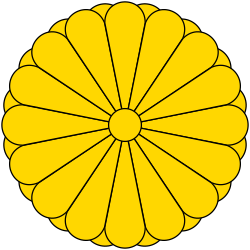Japanese Crest daki Gyouyou
Autor/Urheber:
Attribution:
Das Bild ist mit 'Attribution Required' markiert, aber es wurden keine Informationen über die Attribution bereitgestellt. Vermutlich wurde bei Verwendung des MediaWiki-Templates für die CC-BY Lizenzen der Parameter für die Attribution weggelassen. Autoren und Urheber finden für die korrekte Verwendung der Templates hier ein Beispiel.
Shortlink:
Quelle:
Größe:
688 x 688 Pixel (13437 Bytes)
Beschreibung:
Dakigyoyo is a type of Japanese family crest, "Kyouhamon". It is believed to be a stylized harness of apricot leaves. The figure shows the shape of two half wreaths of apricot leaves curving inward and towards each other at the top. It is often confused, due to resemblance, with the Myoga family crest, but there are differences in the presence or absence of veins and other insignificant shapes. The center space between the leaves in the Otomo crest is generally egg-shaped at the bottom, extending upward to create the impression of a peacock's body with the leaves forming the feathers. The Myoga crest on the other hand has a central space between the leaves which is generally pear or teardrop-shaped capped with a cross-like standard (although this center shape is most likely intended to look like the bud of the myoga plant (Zingiber mioga) with the flower petals just pushing through the tip of the bud).
This kyouhamon was mainly used by Lord Otomo Bungo and his family as well as Lord Ryuzoji who took his lands and crest in battle and Lord Nabeshima who succeeded Lord Ryuzoji.
Lizenz:
Relevante Bilder
Relevante Artikel
Mongoleninvasionen in JapanDie mongolischen Versuche einer Invasion Japans von 1274 und 1281 waren die größten militärischen Angriffe auf Japan in vormoderner Zeit. Auch wenn sie für sich genommen nicht zum Sturz des Kamakura-Shōgunats führten, war ihr Beitrag für den politischen Umbruch – und so für die weitere Entwicklung Japans – entscheidend. .. weiterlesen













